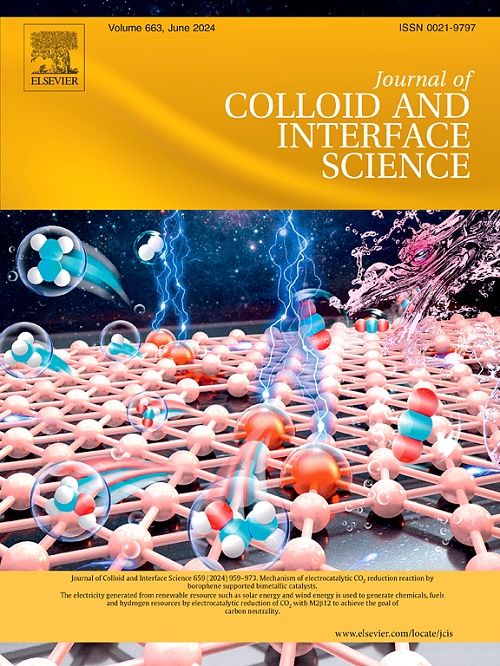Stabilizing high-rate potassium storage by ferromagnetism
IF 9.4
1区 化学
Q1 CHEMISTRY, PHYSICAL
引用次数: 0
Abstract
In this work, pre-magnetized ε-Fe2O3 was used as prototype electrode material to reveal the synergetic effect between ferromagnetism and electrochemical performance. Upon high-rate potassiation, ε-Fe2O3 was unable to fully participate in conversion reaction due to “potassiation retardation”. The higher the rate was, the less complete the conversion reaction became. The as-converted Fe product was magnetized by the remanent magnetization of residual ε-Fe2O3 and underwent a magnetic decantation process. As a result, the Fe phase was magnetically attached to the residual ε-Fe2O3 surface, while the diamagnetic K2O phase was separated out. This phase separation not only suppressed the generation of KOH but also made side reactions involving − COOK species less likely to occur, thereby avoiding a large consumption of electrolyte and stabilizing the solid-electrolyte interphase layer. Driven by this synergy, ε-Fe2O3 showed the best cycling stability on potassium storage at 5 A g−1. Its discharge capacity loss per cycle was as low as 0.094 ‰ from 4 to 700 cycles with Coulombic efficiencies above 99.9 %. Moreover, the results also showed that the rate influence on potassium storage was much greater than that on lithium storage. It was thus anticipated that this work would shed new light on the understanding of interrelated physicochemical properties of electrode material.

利用铁磁性稳定高速率钾储存
本研究以预磁化的ε-Fe2O3为原型电极材料,揭示了铁磁性与电化学性能之间的协同效应。在高速率钾化时,ε-Fe2O3由于“钾化迟滞”而不能充分参与转化反应。反应速率越高,反应越不完全。转化后的铁产物被残余ε-Fe2O3的剩磁磁化,并经历了磁沉降过程。结果表明,Fe相磁性附着在残余的ε-Fe2O3表面,而抗磁性的K2O相被分离。这种相分离不仅抑制了KOH的生成,而且减少了涉及−COOK的副反应的发生,从而避免了大量的电解质消耗,稳定了固-电解质间相层。在这种协同作用的驱动下,ε-Fe2O3在5 A g−1时表现出最佳的钾储存循环稳定性。在4 ~ 700次循环中,每循环放电容量损失仅为0.094‰,库仑效率在99.9%以上。此外,结果还表明,速率对钾储存的影响远大于对锂储存的影响。因此,预计这项工作将为了解电极材料的相关物理化学性质提供新的线索。
本文章由计算机程序翻译,如有差异,请以英文原文为准。
求助全文
约1分钟内获得全文
求助全文
来源期刊
CiteScore
16.10
自引率
7.10%
发文量
2568
审稿时长
2 months
期刊介绍:
The Journal of Colloid and Interface Science publishes original research findings on the fundamental principles of colloid and interface science, as well as innovative applications in various fields. The criteria for publication include impact, quality, novelty, and originality.
Emphasis:
The journal emphasizes fundamental scientific innovation within the following categories:
A.Colloidal Materials and Nanomaterials
B.Soft Colloidal and Self-Assembly Systems
C.Adsorption, Catalysis, and Electrochemistry
D.Interfacial Processes, Capillarity, and Wetting
E.Biomaterials and Nanomedicine
F.Energy Conversion and Storage, and Environmental Technologies

 求助内容:
求助内容: 应助结果提醒方式:
应助结果提醒方式:


